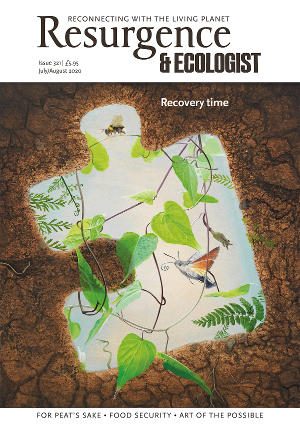Our association with peat is more often than not dark, damp bags of compost, the earthy taste of a peated malt or the acrid smell of a peat brick fire. The peatlands from which it is taken have traditionally been valued solely for what they can be turned into when drained, tamed and destroyed. But traditions change.
Over the last few decades our global knowledge of peatlands has changed. Found in almost every country on Earth, they represent some of the most carbon-rich and biodiverse places on the planet. They are also some of the most endangered. From the frozen tundra of Russia and the ...
There are approximately 392 more words in this article.
To read the rest of this article, please buy this issue, or join the Resurgence Trust. As a member you will receive access to the complete archive of magazines from May 1966.
If you are already a member, please Sign in






